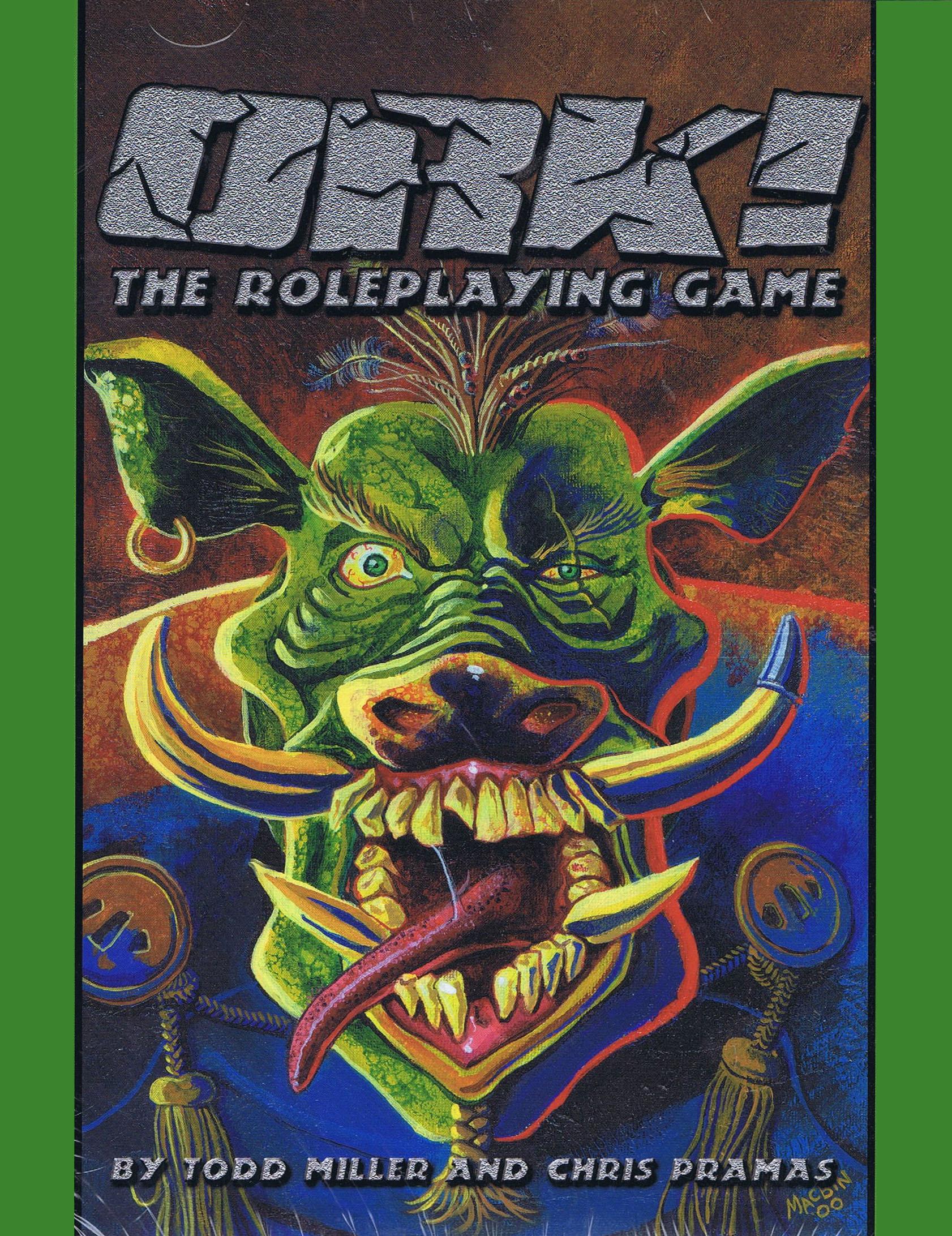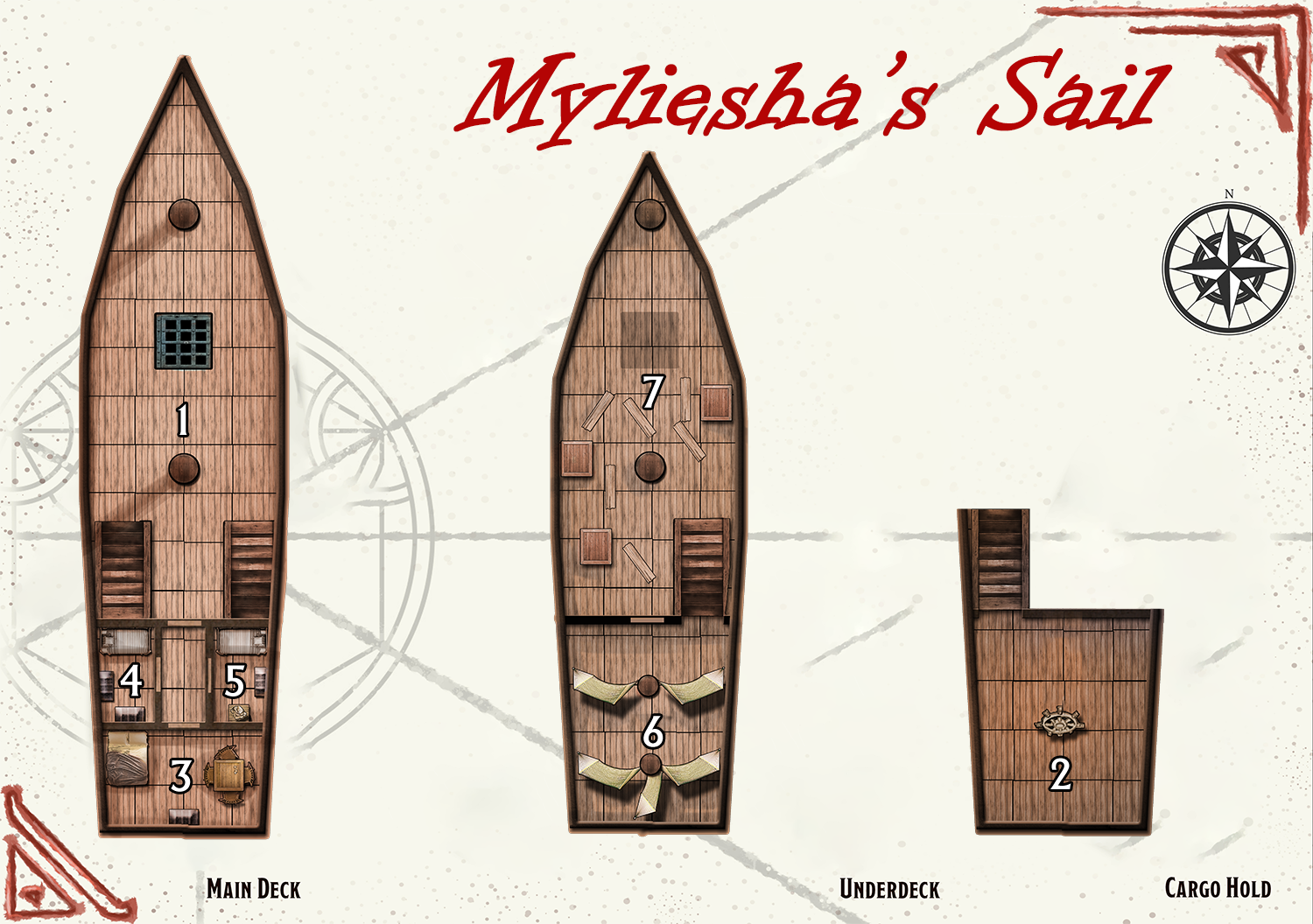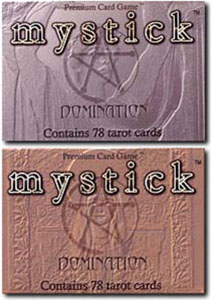The Paranoia of fantasy, Ork! is unashamed satire – targeting Tolkienesque tropes and gamer culture with equal parts aplomb and ruthlessness.
Review Originally Published May 21st, 2001
I’ve been trying to think up clever ways to introduce the concept of Ork!. Here’s one:
Last year I wrote a review of John Wick’s Orkworld — detailing its lavish (and loving) detail of orkish culture, and lauding it for providing a remarkably complete picture of orkish life. Ork! is not that game. Ork! is, in very large part, a satire of Orkworld which managed to get published before Orkworld itself.
Here’s another one:
Ork! is the Paranoia of fantasy. It’s unashamed satire targeting Tolkienesque tropes and gamer culture with equal parts aplomb and ruthlessness.
And here’s the last one:
The concept behind Ork! is simple: You play an ork. An ork is big. An ork is dumb. An ork likes killing and smashing. If you play Ork! you will spend a lot of time saying things like, “Me am ork! Me am kill you!”
Half of Ork! is spent raising the stereotypes of orks specifically (and fantasy in general) to the level of comedy. For example: “An Ork earns respect from his peers by slaying his enemies. Should another Ork come along and call him a coward, that Ork will feel his honor is being attacked. A fight will break out, and someone will lose an eye.” Or: “For Orks, remembering what happened this morning is an exceedingly difficult task. It’s almost impossible to recall the events of yesterday, and last week might as well have been millennia ago.”
The other half of Ork! is spent winking its eye at the stereotypes of gamers (and game designers more particularly), and raising those to the level of comedy. For example: “As we’re sure you’ll be shocked to find out, every Ork has a set of skills that define what he’s good at. Equally shocking is the revelation that these skills are based on the attributes you’ve already chosen. Yes, that was indeed a bolt from the blue, as old Gary would say. A rare moment of genius, we assure you, and certainly not swiped from every RPG of the last 15 years.” Or: “Time in combat is divided into rounds. Yes, that’s right, rounds. We would have invented some clever acronym like TKU (Time Keeping Unit), but we know you’d end up calling them rounds anyway.”
In short, Ork! finds a set of solid themes (“orks are dumb”, “orks are violent”, “game designers do silly things”) and then plays them out over the course of 64 pages.
Oh, yeah, there’s also a game in there. Let’s take a look at that.
SYSTEM
Ork! is a simple game. Which is good, because, as the saying goes, comedy is hard and you don’t need the rules hassling you, too.
The rules of Ork! are also fun – which I also like to see, because it extends the fun environment of the game concept throughout the gaming experience. The one thing that always drove me nuts about Paranoia was the fact that you had this really hilarious game world coupled with a rule system which was just trying too damn hard.
To sum up Ork! in brief:
Character Creation: You have four attributes (Meat, Bones, Twitch, and Mojo) measured in die types. You choose between sixteen skills, which determine how many dice you roll.
Skill Resolution: “Many RPGs use what’s called a target number system. In these games, the benevolent GM decides on the difficulty of a given task, and the player only needs to exceed this target number to complete task. Such systems are for the weak, since they allow the GM to show the horrid trait of mercy while assigning target numbers. In Ork!, the GM represents Krom himself and even the simplest task requires the player to dice off with Krom!”
The GM does have some control over the situation by determining whether Krom approves of the action (2d6), doesn’t care (3d6), is annoyed by it (4d6), or hates the orc trying it (5d6). Beyond that, however, action is simply resolved by the GM rolling and the player rolling: If the player rolls higher than the GM, he succeeds. If the GM rolls higher, the player fails.
(This system created a bit of a soft spot in my heart. The first RPG I ever read was MERP. I didn’t get it. Then I bought Batman, based on Mayfair’s DC Heroes game. I didn’t get it. Frustrated because I thought this whole “roleplaying game” concept was really cool even if these games I were buying might as well have been written in Greek, I created my own Batman RPG – which consisted of me (the GM) rolling 1d6, and my brother (Batman) rolling 1d6. If I rolled higher, Batman would crash the Batmobile while driving back to the Batcave. If my brother rolled higher, Batman would get back to the Batcave successfully… although he might still slip and fall while getting out of the car.)
Combat: Combat resolution works just like normal skill resolution – except the role is contested with another character, rather than with Krom. Damage is handled through a wound level system (Right as Rain; Just a Scratch; Oww, Quit It!; Arrrrgghhhhhh!; Call the Sawbones!; and See You In Hell).
CONCLUSION
The only real downside to Ork! is a couple of spelling errors scattered spasmodically here and there through the book (given the subject matter, though, you could consider this a feature rather than a bug). And, of course, the fact that – like most combat-heavy comedy games — Ork! is most suitable for the occasional one-shot (rather than any sort of prolonged campaign). Not a big deal when you look at the Big Picture:
Ork! is fun. It’s fun to read. It’s fun to play. It’s fun to joke about with your gamer buddies.
So if you don’t pick up a copy of Ork! at your earliest opportunity, I have only one thing to say to you:
Me am Ork! Me am kill you!
Style: 4
Substance: 4
Author: Todd Miller and Chris Pramas
Publisher: Green Ronin Publishing
Price: $12.95
ISBN: 0-9701048-0-4
Product Code: GRR1001
Pages: 64
For an explanation of where these reviews came from and why you can no longer find them at RPGNet, click here.














